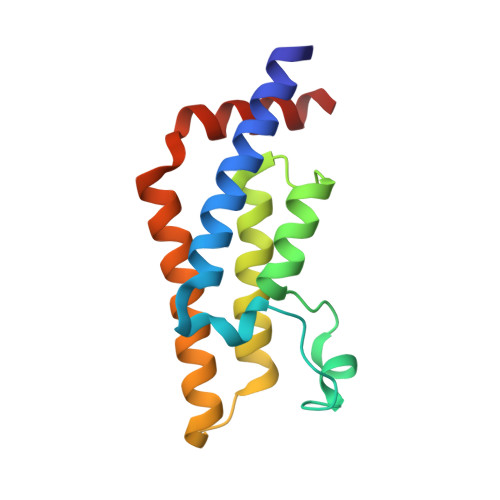Fragment-Based Discovery of Low-Micromolar Atad2 Bromodomain Inhibitors.
Demont, E.H., Chung, C., Furze, R.C., Grandi, P., Michon, A., Wellaway, C., Barrett, N., Bridges, A.M., Craggs, P.D., Diallo, H., Dixon, D.P., Douault, C., Emmons, A.J., Jones, E.J., Karamshi, B.V., Locke, K., Mitchell, D.J., Mouzon, B.H., Prinjha, R.K., Roberts, A.D., Sheppard, R.J., Watson, R.J., Bamborough, P.(2015) J Med Chem 58: 5649
- PubMed: 26155854
- DOI: https://doi.org/10.1021/acs.jmedchem.5b00772
- Primary Citation of Related Structures:
5A5N, 5A5O, 5A5P, 5A5Q, 5A5R, 5A5S - PubMed Abstract:
Overexpression of ATAD2 (ATPase family, AAA domain containing 2) has been linked to disease severity and progression in a wide range of cancers, and is implicated in the regulation of several drivers of cancer growth. Little is known of the dependence of these effects upon the ATAD2 bromodomain, which has been categorized as among the least tractable of its class. The absence of any potent, selective inhibitors limits clear understanding of the therapeutic potential of the bromodomain. Here, we describe the discovery of a hit from a fragment-based targeted array. Optimization of this produced the first known micromolar inhibitors of the ATAD2 bromodomain.
Organizational Affiliation:
¡́Molecular Discovery Research, Cellzome GmbH, GlaxoSmithKline, Meyerhofstrasse 1, 69117 Heidelberg, Germany.



















